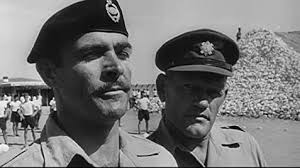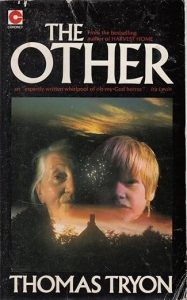
© Coronet Books
It’ll be Halloween in a fortnight’s time. I was reminded of this when, the other day, I saw the British press start on its annual pre-Halloween custom of complaining about British people celebrating Halloween too enthusiastically. They shouldn’t be doing this because, supposedly, the festival isn’t British but American. Here’s the latest whinge from Guardian columnist Zoe Williams. It seems to have escaped these British (i.e., English) commentators that Halloween started long ago in Scotland (still a constituent nation of the United Kingdom) and Ireland (part of which is still a constituent nation, or province, of the United Kingdom) and was then brought to America by Scottish and Irish settlers. So, if you view Halloween as ‘un-British’, you don’t know what you’re talking about. Or maybe you believe Scotland and Northern Ireland aren’t still part of clapped-out Brexit Britain. If only…
Anyway, as is my pre-Halloween custom every year, here’s the first of a few entries that are in keeping with the creepiness of the season. I begin with a review of the bestselling 1971 horror novel The Other by Thomas Tryon.
Thomas Tryon made his name rather spectacularly as a novelist in 1971 with his debut effort The Other. This spent more than half-a-year in The New York Times bestseller list and sold over 3.5 million copies. It also – along with the similar success of Ira Levin’s Rosemary’s Baby (1967) and William Peter Blatty’s The Exorcist (1971) – helped inspire a boom in horror fiction that meant during the 1970s and 1980s bookshop-racks and shelves were crammed with lurid-covered horror paperbacks while authors like John Farris, James Herbert, Shaun Hutson, Dean Koontz, Graham Masterton, Robert R. McCammon, Michael McDowell, John Saul, Guy N. Smith and Whitley Streiber, not to mention a young Stephen King, had themselves ‘a nice little earner’. But before that, in the 1950s and 1960s, Thomas Tryon was better known as the TV and movie actor Tom Tryon. And yes, this makes me sound ancient, but I knew him for his acting before I knew him for his writing.
As a youngster, I was obsessed with sci-fi movies and westerns, so I remembered seeing him in 1958’s sci-fi potboiler, the gloriously titled I Married a Monster from Outer Space, and in the run-of-the-mill 1965 western (scripted by Sam Peckinpah) The Glory Guys. I don’t remember him, but must also have seen him, in the epic 1963 recreation of the D-Day landings The Longest Day, in which he acted alongside John Wayne. However, as that movie seemed to feature every actor in the American, British, French and German phonebooks at the time, it’s not surprising that I missed him.
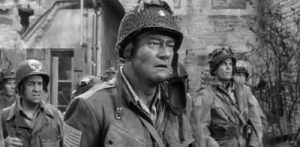
© 20th Century Fox
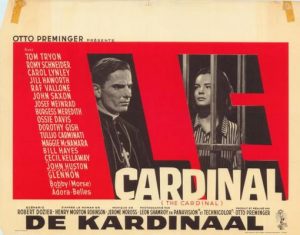
© Columbia Pictures
It was surely frustrating for Tryon-the-actor that his biggest roles were in B-movies, while in more prestigious fare he was relegated to the supporting cast. Plus, to supplement his movie income, he had to do a lot of TV work. Perhaps the closest he came to the big time was playing the main character in Otto Preminger’s prestigious 1963 move The Cardinal, an adaptation of Henry Morton Robinson’s hugely bestselling – but now forgotten – novel of the same name from 1950. Ironically, this may have been the film that made him resolve to give up acting, because he had a hideous time working with the notoriously dictatorial Preminger. According to the director’s Wikipedia entry, “Preminger would scream at him, zoom in on his shaking hands, and repeatedly fire and rehire him, with the result that Tryon was hospitalised with a body rash and peeling skin, due to nerves.” On his own Wikipedia entry, Tryon is quoted as saying of The Cardinal, “To this day, I cannot look at that film. It’s because of Preminger. He was a tyrant who ruled by terror. He tied me up in knots. He screamed at me. He called me names. He said I was lazy. He said I was a fool. He never cursed me. His insults were far more personal.”
I wonder if it’s because of the horrors Preminger inflicted on him that when Tryon reinvented himself as a novelist, his first book, The Other, was a horror one. I also wonder if his debut was influenced by the fact that in 1960 he narrowly missed getting the role of Sam Loomis, lover of Janet Leigh’s doomed Marion Crane, in Alfred Hitchcock’s Psycho. The Psycho-esque element becomes more noticeable the further you go into Tryon’s novel.
The Other centres on a sensitive, imaginative and kind-hearted boy called Niles Perry who lives in a large, rambling house in New England in 1935 with several family members: his agoraphobic mother Alexandra, his spritely Russian-emigrant grandmother Ada, his Uncle George, his Aunt Vee and his annoying cousin Russell… and his twin brother Holland, who despite being Niles’s closest confidant is aloof, elusive and mean-spirited. We get an idea of the meanness of Holland’s spirit early on when we see him kill one of Russell’s pet rats. Niles reacts to this with horror and promptly tries to give the unfortunate rodent a funeral using a ‘Sunshine Biscuit box’ as a coffin and a bunch of clover as a wreath. But out of misguided sibling loyalty, he refuses to believe his brother is a wrong ’un and persists in hanging out with him and trying to stay in his good books.
Meanwhile, a shadow hangs over the household thanks to the recent death of Niles and Holland’s father Vining Perry. He died “while moving the last of the heavy baskets from the threshing floor of the barn down to the apple cellar for winter storage… Father started down with a basket… he was halfway down when, hearing a noise, he looked up to see the door, the heavy iron-bound trapdoor, come crashing down on his head…” As we learn more about Holland’s malignant nature, we begin to wonder if Vining’s death was really an accident.
The book features several more deaths, and near-deaths, and there’s also a big, macabre twist that I have to say I saw coming from very early on. To be fair to Tryon, when he penned the book in 1971, that twist might have been less of a stale trope in horror fiction – it might have seemed fresh and caught his readers by genuine surprise.
What I find interesting, though, is that while the book contains its share of incidents, its pace feels very leisurely and in between the scary bits there’s a lot of other stuff. You get back-stories – most notably Ada’s, which describes her experiences as a young woman in Russia – and sub-plots, including one about a ‘game’ that the hyper-imaginative Niles plays with his grandmother, whereby he almost supernaturally projects himself into the bodies of other creatures, like birds and dragonflies, so that he can see the world through their eyes. Tryon, who was born in Connecticut in 1926 and would have been a boy too at this time, also delights in making references to the culture and events of the era – from the popular radio-comedy show Amos ‘n’ Andy to the Irish tenor John McCormack, to the hubbub over the kidnapping of Charles Lindbergh’s baby. Indeed, horribly, the plot echoes the Lindbergh case near the end.
You also get a lot of description of the house, its outhouses and grounds, the local town and the surrounding countryside. Tryon illustrates these things with a nice turn of phrase and embroiders the descriptions with precise details that no doubt come from his own childhood memories. Of a carnival that installs itself in the town one evening, he writes: “On either side of a narrow avenue carpeted with a debris of strewn popcorn and crumpled Dixie cups, booths, shabby, limp, furnished third-rate amusement: Win-a-doll; Madam Zora, Stargazer; Chan Yu the Disappearing Marvel; Zuleika, the World’s Only True Half Man-Half Woman.” The Perrys’ barn, meanwhile, is “venerable, swaybacked, lichen-spotted, musty, sitting on a small rise beside the icehouse road. Upon the roof-tree was a cupola, a four-windowed affair where pigeons were housed. This was the highest point anywhere around, and on this small peaked roof sat a weathervane, a peregrine falcon, emblem of the Perrys, commanding the view.” At best, Tryon evokes the New England of his childhood with the vivacity that, say, Ray Bradbury evoked the Midwest or Davis Grubb evoked the South.
I do wonder, though, if the book was submitted to a publisher today – when writers are urged to be economical with their prose and to-the-point with their plots – would it ever escape from the slush pile? Its fondness for descriptions and digressions, with the chills and nastiness served up only sporadically, makes it seem rather old-fashioned now… and not just because it’s set in 1935.
But that’s not meant as a criticism. The Other was a slow read for me, and it took me time to get through it, but by the time I finished it I’d found it a rewarding book. And it was a surprisingly downbeat one – the chills and nastiness, when they come, are chilling and nasty. You needn’t expect a happy ending for anyone, not even the youngest and most innocent of the book’s characters. Indeed, as an author, Thomas Tryon treats his characters with a cruelty similar to that meted out to him, as an actor, by the ghastly Otto Preminger.
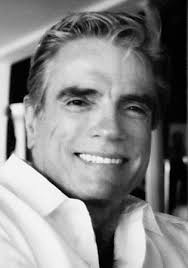
From centipedepress.com


